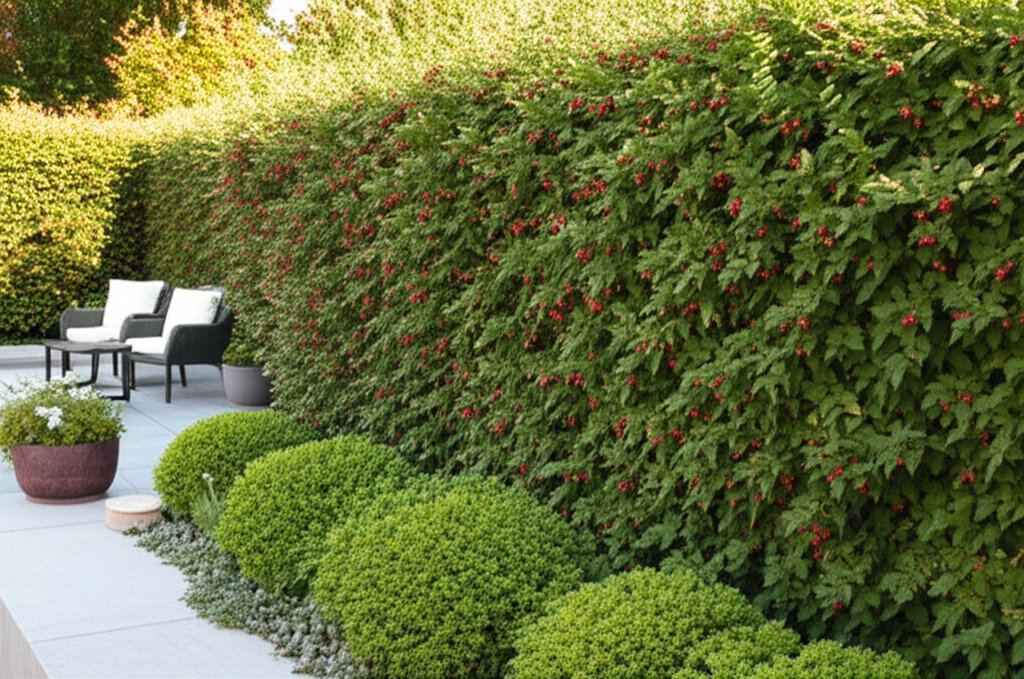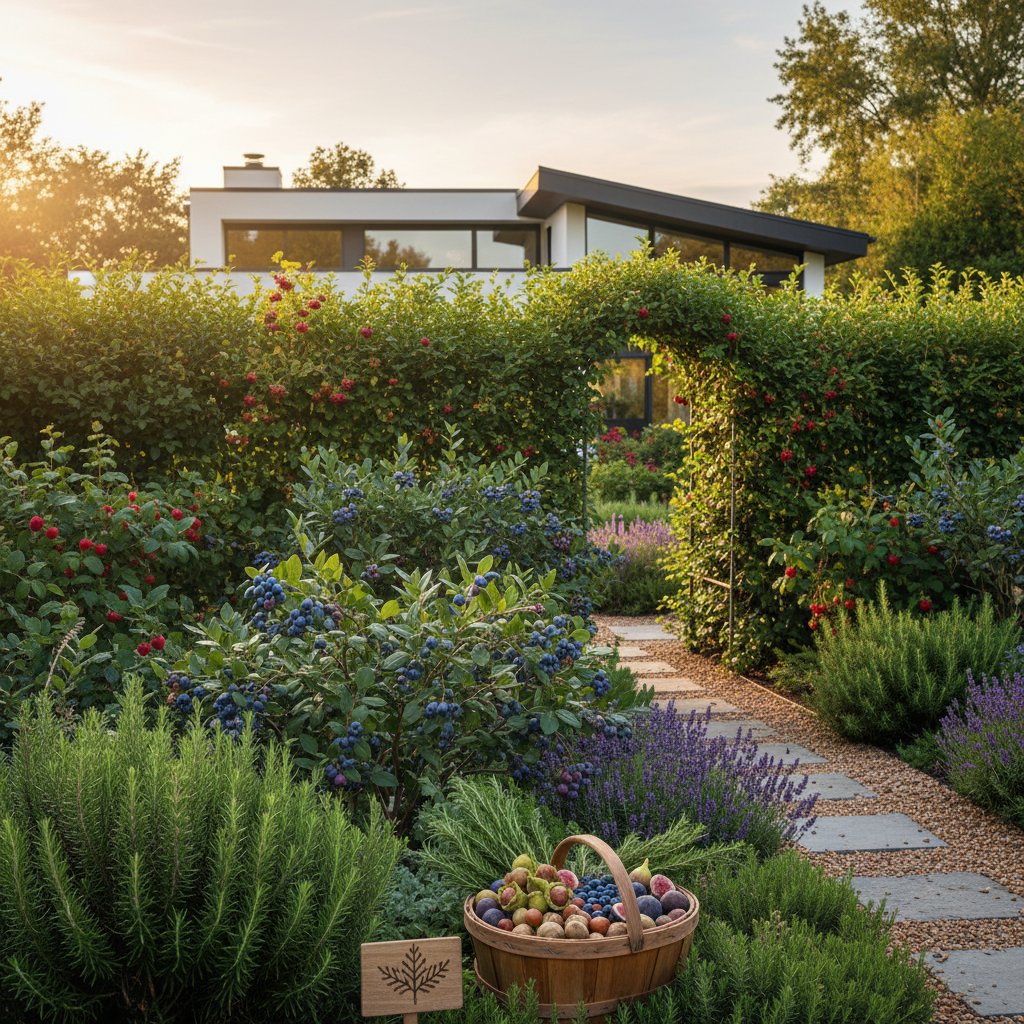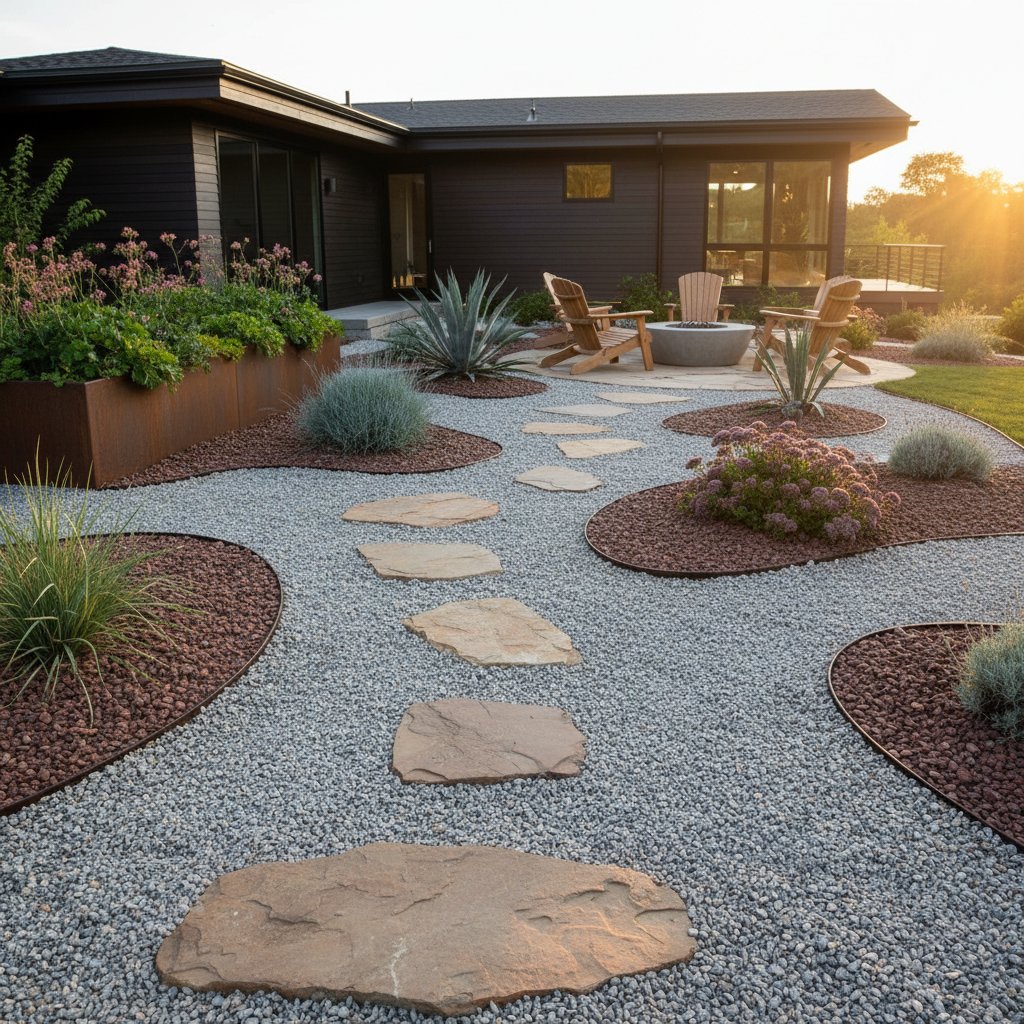Edible Hedges: Integrate Fruit and Flavor into Your 2025 Landscape
Homeowners increasingly seek landscapes that serve multiple purposes. Traditional hedges provide structure and privacy, yet they often lack utility beyond appearance. Opting for edible varieties transforms these borders into sources of fresh produce, enhancing both the environment and daily life.
Edible hedges integrate diverse elements such as berries, herbs, and nuts. These plants establish clear boundaries, screen unsightly views, or define pathways while yielding harvests for human consumption and bird feeders. This approach aligns decoration with productivity, creating a dynamic outdoor space.
Planning an Edible Hedge
Effective planning balances aesthetics, functionality, and site conditions. Start by evaluating available space and sunlight exposure, then select plants that align with your climate zone. Visualize the hedge as a sequence of seasonal changes, from spring blooms to autumn fruits.
Select Complementary Species
A diverse mix ensures year-round interest and reliable yields. Combine plants varying in height from 3 to 8 feet to create depth and prevent monotony. This combination also promotes cross-pollination, boosting fruit production across the group.
Incorporate these categories for balance:
- Berry producers: Blueberries (Vaccinium corymbosum) offer acidic soil tolerance and summer berries; currants (Ribes spp.) thrive in partial shade with tart fruits ideal for jams.
- Fruit shrubs: Serviceberry (Amelanchier) delivers early summer berries and fall color; dwarf plums (Prunus domestica varieties) provide blossoms in spring and plums by late summer.
- Herbaceous options: Rosemary (Rosmarinus officinalis) forms dense evergreen screens with aromatic leaves; lavender (Lavandula angustifolia) adds pollinator-friendly flowers and culinary uses.
- Nut bearers: Hazelnut (Corylus avellana) grows to 10 feet as a backdrop; dwarf almonds (Prunus dulcis) suit warmer zones with nuts after three years.
Stagger ripening times, such as early blueberries followed by late plums, to extend harvests from May through October. Research USDA hardiness zones to confirm suitability, aiming for natives that require less intervention.
Assess and Prepare Soil
Soil quality determines long-term success. Conduct a simple drainage test by digging a 12-inch hole, filling it with water, and observing how long it takes to drain; ideal is 1-2 inches per hour. Most edible shrubs favor loamy, well-drained soil with a pH of 6.0-7.0.
Amend heavy clay by incorporating 2-3 inches of compost per square foot to enhance aeration. For sandy soils, add organic matter to retain nutrients. Test pH with a home kit and adjust with lime for acidity or sulfur for alkalinity as needed.
Apply 2-3 inches of organic mulch, such as shredded bark, after planting to suppress weeds and regulate moisture. As mulch decomposes, it enriches the soil, fostering microbial activity that supports root health.
Evaluate Maintenance Needs
Align plant choices with your available time and preferences. Native species like elderberry (Sambucus canadensis) demand little pruning and resist common pests in temperate regions. For more involved options, select trainable vines like kiwi that require annual trellis support.
Install an efficient irrigation system early, such as drip tubing spaced 12 inches apart under mulch, to deliver water directly to roots. This method reduces evaporation by up to 50 percent and prevents foliar diseases. Schedule deep watering weekly during establishment, tapering to biweekly once roots expand.
Establishing Your Hedge
Planting marks the transition from plan to reality. Choose a mild day in early spring or fall when soil is workable but not waterlogged. Prepare tools including a sharp shovel, gloves, and compost to streamline the process.
Determine Spacing and Planting Depth
Space plants according to mature size: 2-3 feet for compact berries, 4-6 feet for larger shrubs. This allows interlocking growth for density while avoiding competition. For privacy screens, plant in a staggered double row to accelerate coverage.
Excavate holes twice as wide as the root ball but no deeper than its height to prevent settling. Roughen the hole sides with a fork to encourage outward root growth. Blend native soil with equal parts compost, then position the plant so the crown sits level with the ground surface.
Water each planting with 5-10 gallons to eliminate air pockets, then mound mulch in a 3-foot radius, keeping it 2 inches from stems to deter rot. Monitor for the first two weeks, adding water if the top 2 inches of soil dry out.
Nurture Initial Development
The establishment phase prioritizes root expansion over top growth. Weed meticulously by hand to eliminate competition, focusing on the 12-inch zone around each plant. Apply water deeply but infrequently to promote drought tolerance.
If growth lags, apply a 1-inch layer of compost around the base in mid-spring, avoiding direct contact with stems. This organic boost enhances nutrient availability without the risks of chemical fertilizers. Expect minimal yields in year one; full productivity emerges by year three as the hedge densifies.
Maintaining a Fruitful Hedge
Ongoing care sustains vigor and output. Treat maintenance as seasonal tasks that integrate with garden routines, ensuring the hedge remains healthy without overwhelming effort.
Prune Strategically
Prune to rejuvenate and shape, timing cuts to species needs. For berries, remove 20-30 percent of oldest stems at ground level in late winter to stimulate vigorous replacements. Fruit shrubs benefit from thinning crowded branches post-harvest, opening the canopy for light penetration and reducing disease risk.
Herbs like sage respond to tip pruning every 6-8 weeks during growth, harvesting one-third of the plant to maintain bushiness. Use bypass pruners sterilized with alcohol between cuts to minimize pathogen spread. Annual pruning sessions, lasting 1-2 hours per 20 feet, keep the hedge compact and productive.
Nourish and Protect Soil
Annual top-dressing with 2 inches of compost in spring replenishes key elements like nitrogen and potassium. This practice builds soil structure over time, improving water retention by 20 percent. Avoid over-fertilizing, as excess promotes weak growth susceptible to pests.
Refresh mulch to 3 inches thick each fall, selecting materials like pine needles for acid-loving plants. This layer insulates roots against frost and summer heat, while suppressing weeds that could harbor insects.
Manage Pests Ecologically
Diversity within the hedge naturally deters outbreaks, as pests target specific hosts. Encourage beneficial insects by planting companion flowers like dill nearby to attract predatory wasps. Monitor weekly for signs such as curled leaves on blueberries, indicating aphids.
Deploy physical barriers like row covers during vulnerable periods, or hand-pick larger pests like Japanese beetles into soapy water. For persistent issues, apply neem oil diluted per label instructions as a targeted, low-toxicity option. Healthy, unstressed plants resist infestations better than monocultures.
Adapting Through Seasons
Seasonal adjustments keep the hedge resilient. In spring, inspect for frost damage and remove deadwood to redirect energy. Summer demands consistent moisture during fruit swell, with harvesting every 2-3 days to prevent overripening and bird losses.
Fall cleanup involves raking dropped leaves to compost, preventing fungal buildup. Apply a winter mulch layer for protection, then evaluate the bare structure for gaps to fill next season. These routines align hedge care with natural cycles, minimizing surprises.
Harvesting Rewards from Your Border
An edible hedge evolves into a cornerstone of sustainable living. Regular interaction through pruning and picking deepens appreciation for its contributions. Excess yields, such as surplus currants, can preserve into sauces or share via community swaps.
This design choice yields tangible benefits: reduced grocery needs, enhanced biodiversity, and a resilient landscape. As the hedge matures, it embodies careful stewardship, turning yard edges into vibrant extensions of home and table.



